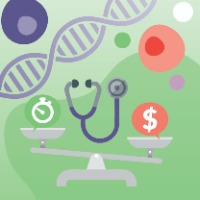Expediting novel ex vivo HSC gene therapies to the clinic: a preclinical perspective
Cell & Gene Therapy Insights 2021; 7(1), 89–98
10.18609/cgti.2021.020
The marketing authorization of a number of ex vivo autologous hematopoietic stem cell (HSC) gene therapies approved by the EMA in recent years represents a further milestone in the field of genetic therapies, creating important momentum for more products of this kind and bringing hope to patients and families affected by devastating rare conditions. With more than two decades of clinical experience and compelling data from over 200 patients treated for primary immunodeficiencies, metabolic disorders and hemoglobinopathies, it is beyond doubt that HSC gene therapies hold the great promise to provide a potentially curative, one-time treatment option for these complex and severe genetic disorders. Yet, the pathway from ‘bench-to-bedside’ is scattered with hurdles and successful navigation requires many years of dedicated cross-functional efforts to reach the destination. Here we reflect on some key learnings from our recent experience in advancing HSC gene therapies through the development and regulatory pathway, with a focus on preclinical aspects and considerations that we believe are critical to enable successful and streamlined delivery of this unique and complex class of products to the clinic and, ultimately, the market. We discuss the necessary preclinical studies and models that are essential to support the clinical translation of these therapies and the strategies that can be implemented to accelerate the preclinical development pathway. We also discuss the current translational gaps and how these can be filled. By addressing these important issues, we hope to provide a perspective to facilitating the progress of similar products through some of the hurdles of preclinical development.
